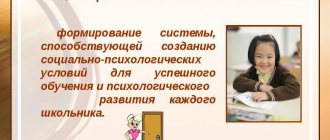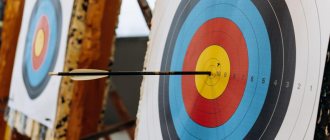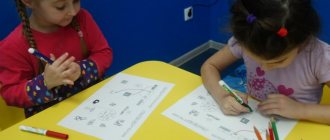Definition of the concept of psychocorrection
What is psychological correction? In psychology, correction is the influence of a specialist on various structures of the psyche in order to correct them. The choice of tools to influence a person is determined by the purpose of psychocorrection.
Unlike psychotherapy, psychocorrection and its types are used in working with people who do not have mental disorders. The object of psychocorrectional influence is an ordinary person faced with a difficult life task. Regardless of the client’s request, the psychologist will build psychocorrectional sessions based on the person’s strengths and personal resources. This technology of work does not involve a detailed analysis of the past, which is used in psychotherapy. Psychocorrection is focused on the client’s present and future.
It is worth noting that the use of psychological correction methods is effective in cases where deficiencies in the development of certain mental structures are not associated with organic pathology. As part of psychological correction, socially approved forms of behavior, certain skills, and positive character traits are formed.
If we compare psychocorrection with psychotherapy, then this technology of work refers to medium-term methods, and psychotherapy refers to long-term methods. You can achieve a positive result of psychocorrection after 10–15 sessions. In psychotherapy, it is possible to achieve the goal after 20–30 sessions. In some cases, people see a therapist for several years.
The expected result of using psychocorrection techniques is the positive dynamics of personal development, the client’s acquisition of abilities for self-realization and self-expression.
Basic principles of psychological and pedagogical correction
The basic principles of psychocorrectional work in our country are based on the fundamental principles developed in domestic psychology that personality is an integral psychological structure that is formed in the process of a person’s life on the basis of his assimilation of social forms of consciousness and behavior (B.G. Ananyev, L. I. Bozhovich, L. S. Vygotsky, P. Y. Galperin, V. V. Davydov, A. V. Zaporozhets, A. N. Leontiev, S. L. Rubinshtein, D. B. Elkonin, etc.). The mental development and formation of a child’s personality are possible only in communication with adults and occur primarily in the activity that is leading at this stage of ontogenesis (in preschool childhood - play, in primary school childhood - educational activity). In the presence of certain, strictly thought-out conditions, all healthy children have the ability to develop. Both the educator and the teacher have no reason to explain the failures of their pupils or pupils by their poor mental development, their lack of abilities, since the development of children itself is largely determined by training, education, communication, and depends on the characteristics of the organization of these processes.
The following can be named as the main conditions for development.
1. Maximum implementation of age-related capabilities and reserves in the work of the teaching staff with students, based on the sensitivity of a particular age period, the zone of proximal development, etc.
Thus, at primary school age, targeted education and upbringing of the child begins. The main type of his activity is educational activity, which plays an important role in the formation and development of all mental properties and qualities. It is this age that is sensitive for the development of such psychological formations as arbitrariness of mental processes, an internal plan of action, reflection on the ways of one’s behavior, the need for active mental activity or a tendency to cognitive activity, and the mastery of educational skills. In other words, by the end of primary school age, a child should be able to learn, want to learn, believe in his abilities and have positive feelings towards school and learning (in any case, school should not cause him disgust and fear).
The best basis for successful learning and development of a child is the harmonious correspondence of educational and intellectual skills and abilities to such personality parameters as self-esteem, cognitive and educational motivation. This correspondence is laid precisely at primary school age. Almost all problems (including underachievement, academic overload, etc.) that arise at subsequent stages of education are explained by the fact that the child either does not know how to study, or learning is not interesting to him, and his prospects are not visible.
2. Development in the educational process of individual characteristics of students within each age period - interests, inclinations, self-awareness (self-esteem, sexual identity, etc.), orientation, value orientations, life plans, etc.
The problem of individual differences is very complex. It is difficult to name at least one property, trait, or quality of a person that would not be included in the scope of this problem. It is known that children in the same class are very different from each other, and this is wonderful. The sameness of children should worry and alert the teacher: something is wrong here.
However, the central point in a person’s individual characteristics is his abilities.
There is a huge variety of activities, each of which requires certain abilities for its implementation at a sufficiently high level. The formation of abilities has its own characteristics at each age stage and is closely related to the development of the child’s interests, self-assessment of his successes and failures in a particular activity. The mental and personal development of a child is impossible without the development of his abilities. The development of abilities and personality development are interdependent processes. There are no children who are incapable of anything. All children are capable of learning, every healthy child is able to receive a general secondary education and master the material of the school curriculum. However, each child has his own path to developing abilities.
The formation and development of abilities requires patience on the part of adults, attention and careful attitude towards the slightest successes of the child. This is exactly what adults often lack! And they soothe their conscience with the common formula that abilities are the exception, not the rule. But if education does not develop the child’s abilities, it is not education, it is some kind of organized pastime.
3. Creation at school of a psychological climate favorable for the development of children, which is determined primarily by productive communication, interaction between the child and teachers, the child and peers.
Meaningful communication is less oriented toward any kind of evaluation or evaluative situations; It is characterized by non-judgment. The highest value in communication is the other person with whom we communicate, a person of any age (even small), with all his qualities, properties, moods, etc. The main thing in communication is respect for the right of another person (child, adult) to his individuality , already established or just emerging.
History of the study of psychocorrection
Psychological correction is a relatively new area of scientific interest among researchers. It arose at the intersection of psychology and defectology. The term appeared in psychological practice in the 70s of the 20th century. E. Seguin is considered the founder of psychocorrection methods. Systemic methods of psychological correction were developed by V.P. Kashchenko.
M. Montessori made a significant contribution to the development of psychocorrection as a branch of special psychology. She used this direction in her work with mentally retarded children.
A.A. Osipova writes that psychological correction is a system of classes to correct a negative character trait or deviant form of personal behavior through psychological methods.
Yu.E. Aleshina, describing psychocorrectional technologies, emphasizes that their use will be ineffective in relation to those mental characteristics that are formed during early childhood. To correct underlying problems, in her opinion, it is more appropriate to use psychotherapy.
Most of the interesting modern methods of psychotherapy and psychocorrection were developed by P. Troshin. Many of them see a connection between psychocorrection and other branches of practical psychology.
Techniques
There are different correction methods. Each of them has certain characteristics, strengths, and weaknesses. When working psychologically with children, all methods must be turned into games, the main principle of which is the creation of leading activity and its knowledge.
Puppet therapy
Using this technique you can:
- relieve emotional stress;
- weaken negative emotions, aggression;
- activate cognitive processes;
- develop hand motor skills;
- increase self-confidence.
Stages:
- Making a doll from any materials. The patient chooses the size and shape independently. The doll can be decorated with various decorative elements.
- Revitalization of the figure. The child must come up with a name for the doll, tell who she can be friends with, and what she does every day.
- Playing out life situations.
At stage 3, you can find out what worries the child, what barriers stand in front of him, preventing him from actively developing.
Psychodrama
Psychocorrectional technique used to work with a group of people. To reveal the inner world of the participants, various dramatic situations are simulated. Objectives of psychodrama:
- formation of new behavior that will be adequate;
- rethinking problems, internal conflicts;
- developing adequate self-understanding;
- overcoming incorrect behavior patterns.
The procedure consists of 5 elements:
- The protagonist is the first player who plays the role of the main character. He performs dramatic scenes.
- The director is an experienced psychologist who identifies disorders and mental problems and helps to deal with them. He creates dramatic scenes and gives commands to the protagonist.
- Auxiliary selves are clients who enhance the functions of the psychologist. They can play the role of people who are close to the main character.
- Spectators are members of a pre-selected group. They analyze the scene after it's completed and discuss it. They themselves do not participate in the experiment.
The stage is the place where the main actions take place.
Holding therapy
The method was developed for psychological assistance to children. When conducting the procedure, the psychologist must:
- encourage and inspire the mother of the child;
- analyze the family situation;
- restrain the mother's despair and anger;
- observe the development of the situation, record or videotape what is happening.
The principle of the technique is to force the mother to attract the child to her. After that, she must hug him and not let him go under any conditions. The mother should try to establish contact with the child, not pay attention to crying, blows, psychosis.
Imago method
An effective method of psychocorrection, in which the patient trains to reproduce different images in order to get rid of internal barriers and fears.
At the first stage, the person acts as a listener or storyteller, at the second stage the dramatization of the story is included, at the third stage dramatic performances are performed in front of the patient.
Psycho-gymnastics
A psychocorrection method in which all participants exchange information without words. Thanks to this procedure, fine motor skills of the hands actively develop and interhemispheric interaction is activated.
Play therapy
A method of psychological correction that is suitable for children and adolescents. Through the game you can get rid of negative emotions and experiences. It is important that the roles of individual participants in the game are special for the main character or all participants, and that the plot is similar to unpleasant life situations.
Art therapy
A set of techniques whose main goal is to influence the human psyche through creativity and art. The psychologist must teach the patient to express his emotions and feelings in paintings and drawings. After this, the specialist analyzes the images, disassembles the details, and prepares conclusions.
Music therapy
It is used to correct emotional disorders in children of different ages. The technique helps:
- increase aesthetic needs;
- develop communication skills;
- activate emotional processes.
Music therapy can be receptive or active. Active is needed to start productive activity, receptive is needed for psychocorrection.
Bibliotherapy
A method of psychological correction in which a psychologist conducts a survey on a topic of interest, selects specific literature for the patient, and reads it. Using this method, you can distract a person from worries, stress, and depression. Additionally, mental balance is restored.
Dance therapy
A psychotherapy technique that helps:
- establish connections between thoughts, feelings, movements;
- develop social skills;
- become aware of your own body, capabilities, features.
The practice of the technique is prohibited for people with increased aggression or diseases of the musculoskeletal system.
Fairy tale therapy
Designed to correct psychological disorders in children. With its help, you can correct the child’s consciousness and behavior. It is necessary to select fairy tales that describe the experiences and problems of children.
Types of psychological correction
What is psychocorrection? In modern practice, psychocorrection is divided into pedagogical, clinical, sports and social. In each of these areas, types of psychocorrection are distinguished.
By task type
If the classification of types of psychological correction is based on the tasks that are set for the specialist, then it will look like this:
- family correction - this type of work by a psychologist allows you to solve problems related to the psychological correction of child-parent and marital relationships;
- individual psychocorrection - in this type, the work of a psychologist is aimed at solving the problems of a specific person.
By nature of direction
Depending on the nature of its focus, psychocorrection can be:
- symptomatic correction aimed at optimizing the client’s emotional state, relieving negative emotions and negative behavioral manifestations (obviously, such a period of psychocorrection in terms of the frequency of meetings does not exceed 3-5 sessions);
- causal psychocorrection is a form of work aimed at identifying and eliminating the causes of deviations in personality psychology (this type of psychocorrection involves systematic work between the psychologist and the client over 10-15 sessions).
By method of influence
According to the method of corrective influence, psychocorrection can be direct and indirect.
Methods of direct psychocorrection are used when the goal of psychological correction is to eliminate negative manifestations of the psyche. The psychologist influences exactly that area of the psyche that needs to be corrected. Techniques of indirect form of influence are focused on the strengths of the individual, through the development of which negative manifestations in behavior disappear.
According to the form of organization
Psychological correction as a field of activity of a practical psychologist is divided into types depending on the form of organization of classes. These are special psychological correction, general correction and private forms of psychocorrection.
Special correction is the most common area of work of a practical psychologist. Special psychocorrection is used in cases where it is necessary to solve the psychological problems of a group or one client. For example, with the help of special psychocorrection, you can eliminate phobias, overcome shyness, and improve the communication skills of children and adolescents.
Private psychocorrection is most often used in education. This is the method of work of school educational psychologists, with the help of which it is possible to help children successfully master the educational program.
Methods of general psychocorrection are used in their work not only by psychologists, but also by teachers. General psychocorrection is a technology of work aimed at regulating intra-group processes in the classroom, forming a team of students and preventing the occurrence of deviant forms of behavior.
Types of psychocorrection
Psychocorrectional measures are classified according to the nature of their focus into symptomatic and causal.
Symptomatic correction involves a short-term intervention used to relieve acute symptoms of a developmental disorder that may interfere with the transition to causal type correction.
Causal (causal) correction reveals the very sources and causes of deviations. This type of psychocorrection takes longer and requires more effort. However, it is more effective when compared with symptomatic correction. This is due to the fact that the same symptoms of deviations can have completely different natures, causes and psychological structure of the disorders.
Depending on the content, it is customary to distinguish between corrections in the following areas:
- Cognitive sphere;
- Personal sphere;
- Affective-volitional sphere;
- Behavioral aspects;
- Interpersonal relationships;
- Intragroup relations (for example, family, marital, collective);
- Relationships between parents and children, etc.
Based on the form of work with clients, psychocorrection is divided into personal and group. Activities can be held in closed natural groups (family, class, team of employees), open groups for clients who have similar problems. A mixed form (individual-group) is also provided.
Based on the duration, there are ultra-short, short and long corrections. The first of them lasts minutes or hours. It focuses on resolving current isolated problems and conflict situations. The negative point is that the effect of such a correction is most often short-lived.
A short correction lasts several hours (days) and is used to solve current problems. It “starts” a process of change in a certain way, which continues after the session is completed.
Long-term correction continues for months. Here the focus is on the personal content of the problems. In the process of such correction, a large number of details are worked out, and the effect is characterized by slow development and a fairly persistent nature.
Indications and contraindications
Methods of psychotherapy and psychocorrection are selected depending on the indications. Most often, indications for psychocorrectional classes are:
- low stress resistance;
- the predominance of a reduced emotional background in a person;
- poor development of communication skills;
- disruption of the relationship between parents and children;
- jealousy;
- increased situational anxiety;
- irritability, aggressiveness, impulsiveness, short temper;
- prolonged stress, depression;
- low self-esteem, lack of self-acceptance;
- conflicts in relationships with peers, social isolation;
- various phobias;
- difficulties of social adaptation.
Psychiatric diagnoses are contraindications to psychological correctional interventions. Serious mental disorders, severe depression.
Principles
The basic principles of psychological correction are:
- Diagnostic principle. A mandatory stage of psychological correction is a comprehensive diagnosis. To select forms and methods of influence, the psychologist needs to establish the child’s social status in the team, his individual typological characteristics, and his stock of social skills.
- The principle of unity of diagnosis and correction. The results of the diagnostic stage of work become the starting point for the development of a psychocorrection program.
- Systematic principle. To achieve a lasting positive result in any direction of psychocorrection, it is necessary to carry out systematic work, involving regular meetings with the client or group.
- Activity principle. The result of the psychologist’s work will be noticeable only if the client is active and included in the activity. The psychologist must stimulate the client’s activity, directing his energy in the right direction.
- The “top-down” correction principle. When planning a corrective intervention, the psychologist focuses on the client’s zone of proximal development. The specialist’s actions are aimed at getting ahead of the natural process of maturation of mental structures and the development of certain skills.
- The principle of “bottom-up” correction. This principle implies the psychologist’s reliance on the client’s zone of actual development. In accordance with this principle, the psychologist uses positive reinforcement of the desired qualities. Negative behavior patterns are stopped.
The purpose of psychocorrection and the tasks of the psychologist
In psychology, the goal of correction is to remove the client from a state of psychological discomfort. Psychologist's tasks:
- bring the client to a new level of personal development;
- contribute to the development of the client’s emotional-volitional sphere;
- prevent emotional burnout;
- establish the causes of children's fears;
- develop certain skills;
- develop voluntary attention, memory, thinking;
- help the client change destructive attitudes;
- increase the socio-psychological status of the individual in a group of peers;
- help a person express himself and activate his creative potential;
- build stress resistance and improve the client’s performance;
- reduce the effect of psychological defense mechanisms of the individual;
- adjust a person’s eating behavior.
Requirements for a psychologist
A systematic approach to psychocorrection can only be demonstrated by qualified psychotherapists or psychologists. Psychocorrection is also used by specialists in the field of clinical psychology in their work. The specialist conducting psychocorrectional classes has serious requirements:
- This person must have basic knowledge in the field of psychology, as well as undergo additional training in the field of “Psychotherapy” or “Psychological Correction”.
- A specialist who uses various types of psychological correction in his work must be able to build cooperation with representatives of related professions: defectologists, psychiatrists, neuropsychologists, psychoneurologists, pathopsychologists. The joint work of specialists is necessary in the case when, in order to achieve lasting positive dynamics in personal development, a person requires comprehensive support. Thus, in severe cases of depression, psychocorrection methods must be supplemented with drug treatment. If at the diagnostic stage of psychocorrection organic causes of psychological difficulties are discovered, the psychologist works together with a defectologist.
- A psychologist planning to engage in psychocorrection must be personally prepared for this. To do this, it is not enough to have a diploma in psychological education and certificates confirming the completion of advanced training courses. The psychologist needs to take a supervision course, where he can get rid of his personal problems. Only after healing your soul can you begin to heal the soul of another person.
Scheme of a psychocorrection session
All types of psychocorrection can be implemented in two main forms: group and individual. The psychocorrectional lesson scheme is as follows:
- Dissociation. At this stage of psychological correction, the main focus of the psychologist’s work is diagnosis. It is necessary to define the problem, assess its scale, and identify its causes. In addition, the psychologist needs to create confidence in the client that his problem can be solved.
- Correction. At this stage, the psychologist implements a series of psychocorrectional sessions in a group or individual form. At this stage, not only the psychologist works, but also the client. Here the psychologist asks the person: “Describe your problem, name examples of emotions with which you can compare it.” Psychological methods for transforming the situation and correcting behavioral stereotypes are selected based on the person’s responses. The psychologist invites the person to look at the situation from different angles and perform exercises. Together with the client, he analyzes the situation and outlines different ways to resolve it.
- Association. This is the final stage of the session, at which the psychologist seeks to consolidate in the client’s mind a solution to the problem in the form of an association image. It becomes the beginning of a new life scenario for a person.
Requirements for correctional and developmental programs
Requirements for programs are determined by the basic principles of psychological and pedagogical correction: the unity of correction and development, the unity of age-related and individual development, the unity of diagnostics and development correction, the activity principle of correction, the approach to each child as gifted. The unity of correction and development determined the name of the programs as correctional and developmental.
The correctional and developmental program is developed and implemented in the joint activities of a child (school) psychologist and an educator (educator, teacher). A psychologist, based on a psychological examination of children (psychodiagnostics) or a psychological analysis of any pedagogical situation, formulates recommendations. These recommendations are implemented in work with children by teachers and parents in interaction with a psychologist and with the active role of the child himself.
Recommendations for correcting a child’s mental development are effective only when they are given in the context of understanding the whole personality, in the totality of all its qualities and properties. S.L. Rubinstein included in the holistic personality structure:
· orientation (needs, motives, goals, interests, ideals, beliefs, worldview, attitudes);
· abilities (general, special, giftedness, talent);
· character (attitude towards oneself, towards people, towards the world, volitional qualities).
It is necessary to keep in mind that the core of a personality is its motivational sphere. The structure and nature of any mental qualities largely depend on the orientation of a person’s personality, on their connection with his other properties and on the function that these properties perform in the general system of human behavior. The child’s personality structure is just being formed, its components develop unevenly, correctional programs are designed to create conditions for the balanced development of individual structural components of the personality as an integrity.
At the same time, work can be done both with the child himself to correct his individual psychological formations, and with the living conditions, upbringing and education in which the child finds himself.
Correctional work should be structured not as a simple training of skills and abilities, not as individual exercises to improve psychological activity, but as a holistic, meaningful activity of the child, organically fitting into the system of his daily life relationships. In preschool age, a universal form of correction is play. Play activities can be successfully used both to correct a child’s personality and to develop his cognitive processes, speech, communication, and behavior. At school age, this form of correction is a specially organized educational activity, for example, using the method of gradual formation of mental actions. Both in preschool and primary school age, such correctional and developmental programs are effective that include children in a variety of creative activities - visual, gaming, literary, labor, etc.
It is very important that developmental correction be proactive and anticipatory in nature. She should strive not to exercise and improve what already exists, what has already been achieved by the child, but to actively form what should be achieved by the child in the near future in accordance with the laws and requirements of age-related development and the formation of personal individuality. In other words, when developing a strategy for correctional work, one cannot limit oneself to immediate developmental needs, but must take into account and focus on the development perspective. The value of a correctional development program is that it allows the child to feel promising in activities that are personally significant to him.
When developing correctional and developmental programs, it should be understood that each kindergarten, school, boarding school, orphanage, any educational children's institution has its own characteristics, which, one way or another, influence the development of the child. Therefore, the specifics of specific tasks and forms of correctional work depend on the type of child care institution.
Methods and techniques
In modern psychology there are a large number of methods of psychocorrection. The choice of specific methods and technologies of work is determined by the age of the client. So, for working with adults they use:
- operant conditioned correction;
- psychocorrection, which is based on psychoanalysis;
- transactional analysis;
- humanistic psychocorrection by A. Adler;
- correction that focuses on the client’s personality;
- existential psychocorrection;
- Gestalt correction;
- rational-emotive correction;
- NLP.
When working with children, the psychologist uses the following methods of psychological correction:
- method of replacement ontogenesis;
- gaming technologies;
- art therapy;
- cognitive-behavioral correction;
- methods of social correction.
The main types of psychological correction methods are puppet therapy, psychodrama, holding therapy, imago method, psycho-gymnastics, play therapy, art therapy, music therapy, dance therapy, bibliotherapy, and fairy tale therapy.
Puppet therapy
Puppet therapy allows a person to cope with negative experiences and negative emotions, stabilize their mood, and increase their self-esteem. In addition, this work technology stimulates cognitive mental processes, develops creativity and promotes self-expression.
This technique involves the client independently making a doll, which he will need to revive during psychological work: come up with a name for it, tell about himself on behalf of this doll. Corrective action is carried out through the client playing out various problem situations, the main character in which is the doll he made.
Psychodrama
Psychodrama is the basis of group psychocorrection. The technique promotes the removal of psychological defense mechanisms and the creative self-expression of participants. The psychocorrectional effect is achieved through the leader’s modeling of various situations in which each of the group members is given one or another social role.
Psychodrama expands the stock of behavioral stereotypes among group members and gives participants the opportunity to work through their intrapersonal conflicts.
Holding therapy
The main area of psychocorrection, in which the possibilities of holding therapy are very high, is the correction of intra-family relationships. This technology allows you to restore lost mutual understanding between parents and child. The technique is based on teaching the mother to show care and tender feelings in her relationship with her child. Child-parent relationships become harmonious, since in the course of working with families, the psychologist teaches parents conflict-free behavior and the renunciation of negative emotions in resolving issues of raising children.
Imago method
The Imago method is aimed at overcoming a person’s internal barriers and correcting phobias. This type of psychological correction forms effective forms of behavior in the client.
The client needs to practice self-expression daily. To do this, he must first form an effective image of “I”, and then learn to translate it through behavior.
Psycho-gymnastics
The concept of psycho-gymnastics in psycho-correction can be interpreted as “body language”, since this method of social psycho-correction refers to methods of communication without words. Psychogymnastics develops the social perception of the individual.
The definition of psycho-gymnastics as a method of correction in psychology presupposes the use of various exercises by a psychologist in classes. This:
- exercises that allow you to learn to express emotions in socially acceptable ways;
- exercises that develop skills in correctly interpreting nonverbal signals in the communication process;
- psychological studies;
- exercises to relieve psychological stress in a group.
Play therapy
When working practically with children, psychologists often carry out psychocorrection using game methods, since play is a powerful factor in personality development.
The definitions of various authors convince us that psychological correction through play is achieved through the formation of positive emotional connections between children. Through play, a child learns to cope with his fears, negative experiences, and self-doubt. Game therapy is a method of psychological correction of communication difficulties. In some cases, the purpose of this type of psychological influence is to correct mental development disorders in children.
Game psychocorrection varies in form of organization. These can be role-playing, simulation, theatrical games.
The principles of gaming psychocorrection and its key characteristics are determined by the age characteristics of the group in which it is implemented.
Art therapy
Art therapy is healing through creativity. This direction is on the border between psychotherapy and psychocorrection, as it is used in both directions of psychological assistance. What psychological correction techniques do psychotherapists who practice the art therapeutic approach use with patients? The following methods belong to art therapeutic techniques of psychocorrection:
- visual activity (what media will be used in the drawing process is decided by the client himself, choosing those tools with which it is easier for him to convey his feelings and experiences on paper);
- paper plastic (this technique is used to create three-dimensional figures-images);
- creating a mandala of desires (this technique is used in cases where the client needs to be helped to set a goal and outline ways to achieve it);
- making a collage (the technique is used to analyze past life experiences, extract benefits from them and predict the future).
As part of psychological correction, conditions for self-expression are created with the help of creativity. This is what many people lack in their usual lives in order to find harmony with the world and with themselves.
According to the form of organization of work with a client, psychocorrection through the means of art can be both group and individual. The main mechanisms for achieving results in art therapy are active imagination, creativity and sublimation, with the help of which the client harmonizes the relationship between the conscious layer of his “I” and its unconscious part.
Music therapy
When working with children, music is often used as a means of correction: listening to melodies and playing music. This type of psychocorrection is an effective method of working with fears, speech and movement disorders, normalizing the emotional-volitional sphere, and eliminating psychosomatic disorders.
Bibliotherapy
In the process of conducting correctional classes, there is a need to organize educational activities. To solve this problem of psychocorrection, the specialist selects literature on a particular topic for the client. At the same time, the psychologist distracts the person from his worries and helps him get out of a depressive state as quickly as possible.
Dance therapy
This is one of the methods of group psychocorrection. Dance therapy helps the client develop social skills, helps him understand the boundaries of his own body, believe in his abilities, and establish connections between movements and thoughts, thoughts and feelings. Dance therapy techniques are effective for emotional disorders, poor development of communication skills, and lack of ability to build effective interpersonal interaction.
It is worth noting that dance therapy is contraindicated for aggressive patients, as well as people with diseases of the musculoskeletal system.
Fairy tale therapy
Fairytale therapy is a direction of psychocorrection that is used in working with children of preschool and primary school age. It is used to correct behavior and children's consciousness, and to correct the emotional sphere.
Psychologists use fairy tales to form the moral foundations of personality in children. A fairy tale works better than moralizing, prohibitions and punishments. Wanting to be like a positive fairy tale character, the child adopts his behavior.
Psychotherapy and psychology in social work
The pedagogical and psychological aspects of social protection of the population have a close connection with each other. Despite the fact that psychology is an independent science, it acts as a toolkit for pedagogical activity.
It is important for a teacher to master psychological theory and methods of psychological analysis of situations, relationships, and personality traits.
A social work specialist must identify people in need of help, including psychological and pedagogical assistance, and establish the causes of difficulties, providing assistance in resolving them.
The positions of a social worker include assistance in family education and consultations not only psychological and pedagogical, but also legal on family and marriage issues.
His area of activity includes educational work with juvenile offenders, as well as participation in work on adoption, the creation of social assistance centers, guardianship, trusteeship, shelters, teenage clubs and centers, and the organization of work on the social adaptation of persons serving sentences.
Note 1
Thus, the psychological component predominates in social work.
On the formal side, the activities of a social worker are organizational in nature and require appropriate skills.
The content of the work is related to knowledge of family problems. A social worker, by and large, is a professionally trained specialist to work in society.
The psychological context of this work is reflected in the professional rights of a social worker:
- protect the interests of the client and represent them in legislative and executive authorities;
- conduct opinion polls and collect information related to the client’s needs;
- formally request public organizations regarding personal and social problems of clients;
- promote proper family education;
- popularize the experience of social work;
- take part in social movements of citizens to solve specific social problems.
Experience shows that one social work specialist can only provide assistance to a small number of families living within the reach of the social worker.
The problems that exist in these families are grouped into intrapersonal, intrafamily, and social problems.
Intrapersonal and intrafamily problems are of a socio-psychological nature, and therefore require the social worker to have knowledge of general, developmental, social psychology, the psychology of communication and management.
For families, the social worker plays several roles at once - broker, lawyer, teacher, administrator, consultant, planner, and each role requires communication skills and different behaviors.
Since vulnerable people who need help become clients of social services, the content of communication will depend on the essence of the problem being solved.
The ethics in the work of a social educator are one - humanistic - these are trust, respect, tolerance, openness, unselfishness, mercy, loyalty to word and duty, love and freedom.
A social worker is an official, a representative of a government structure, so his personality must inspire trust and favor.










